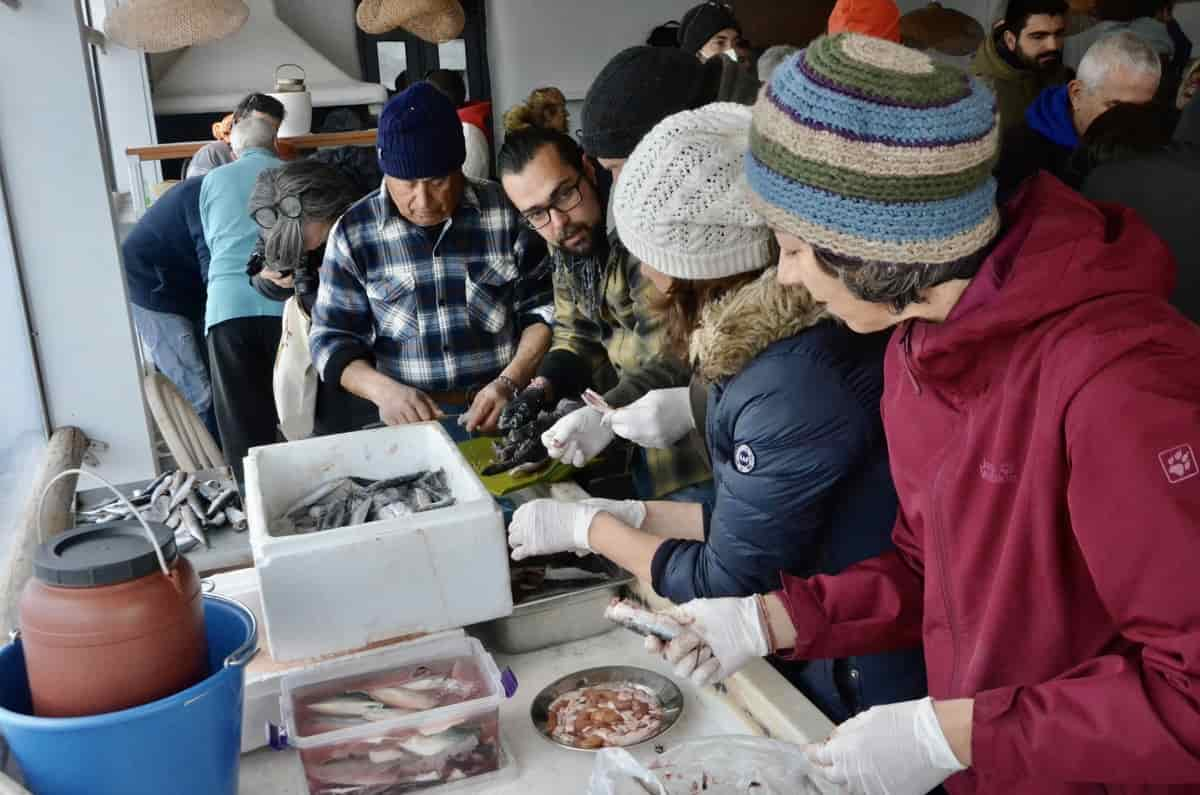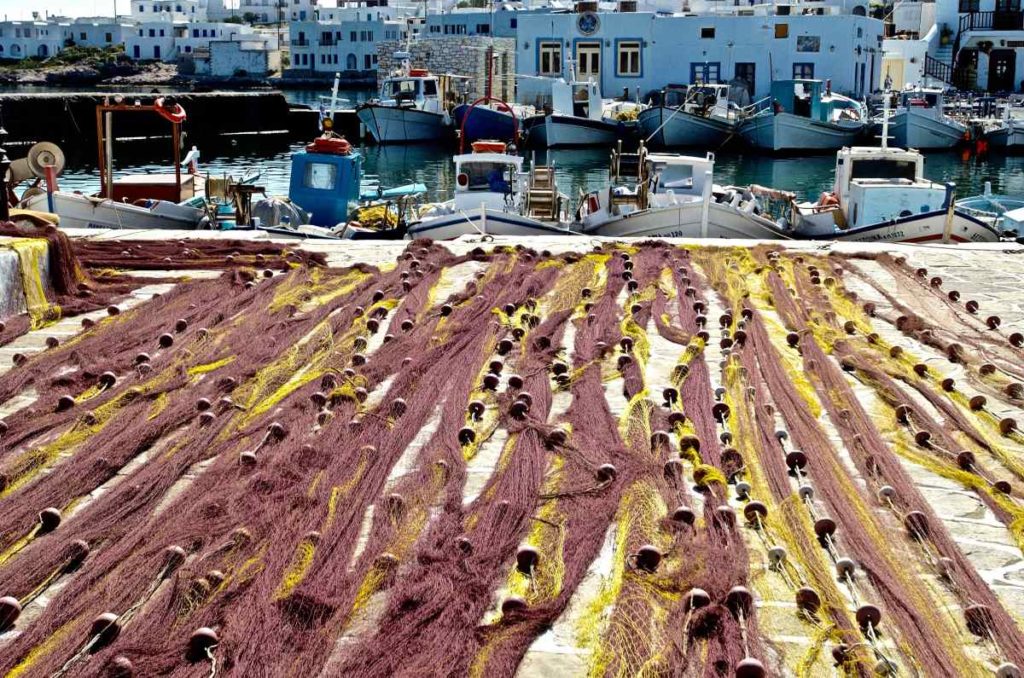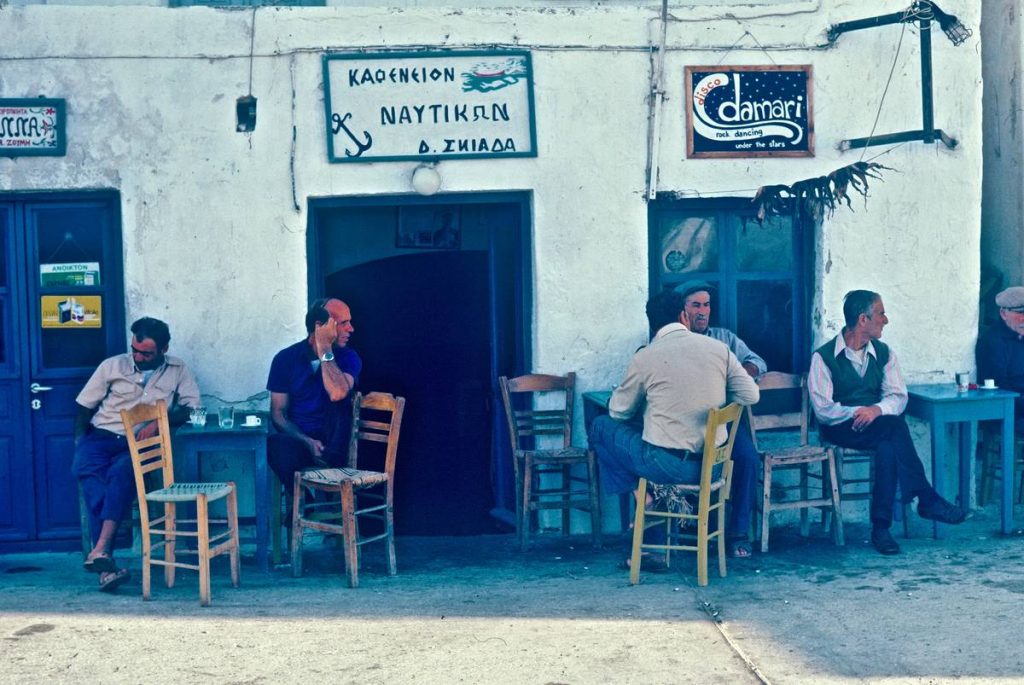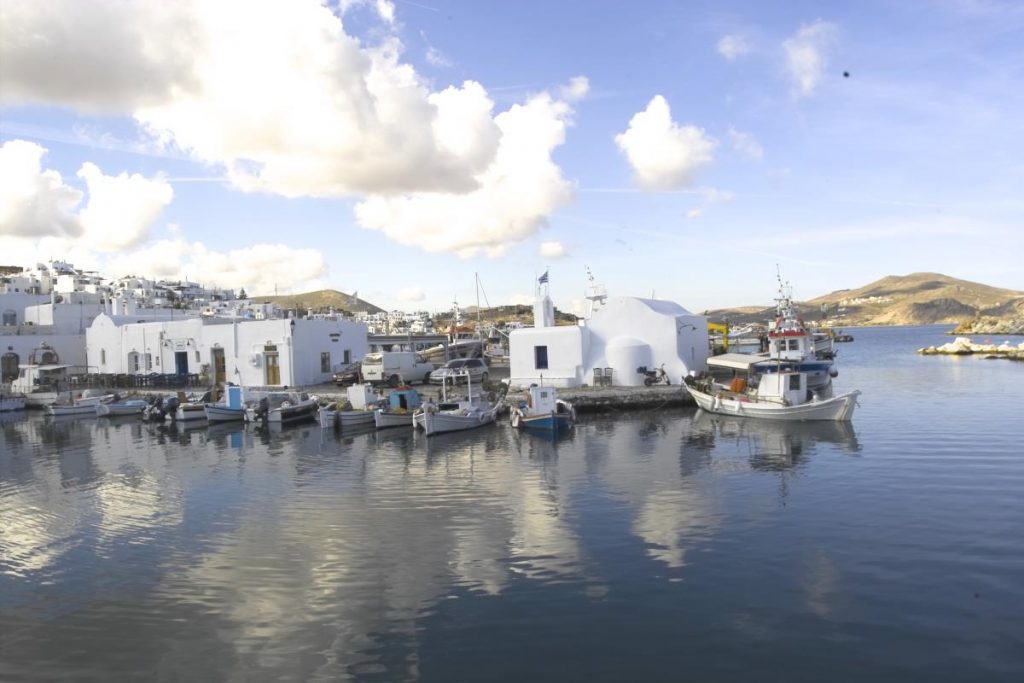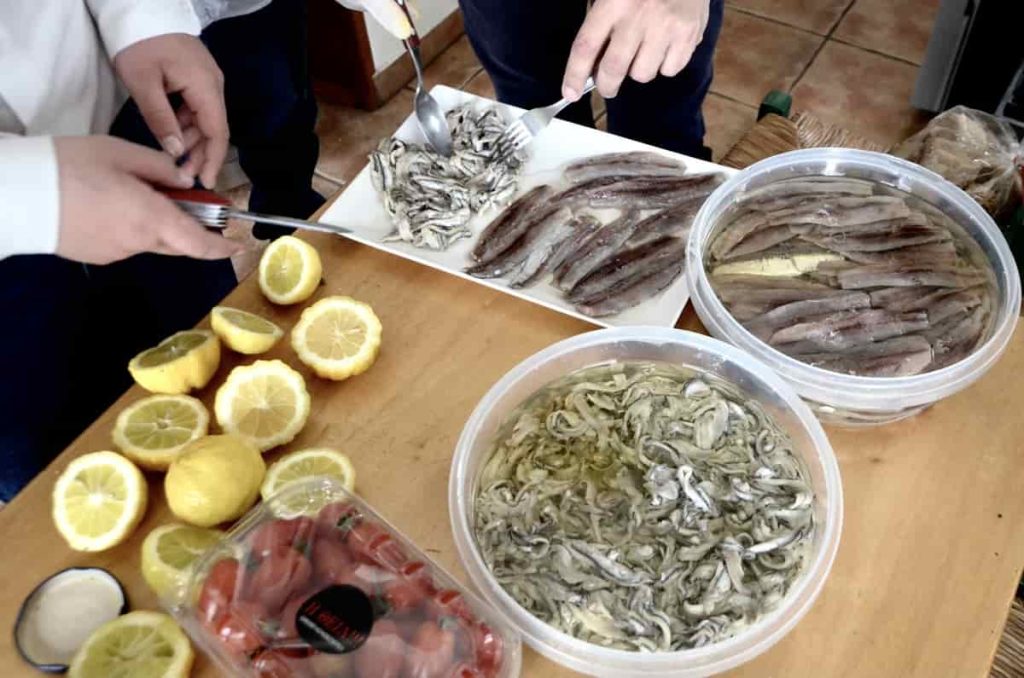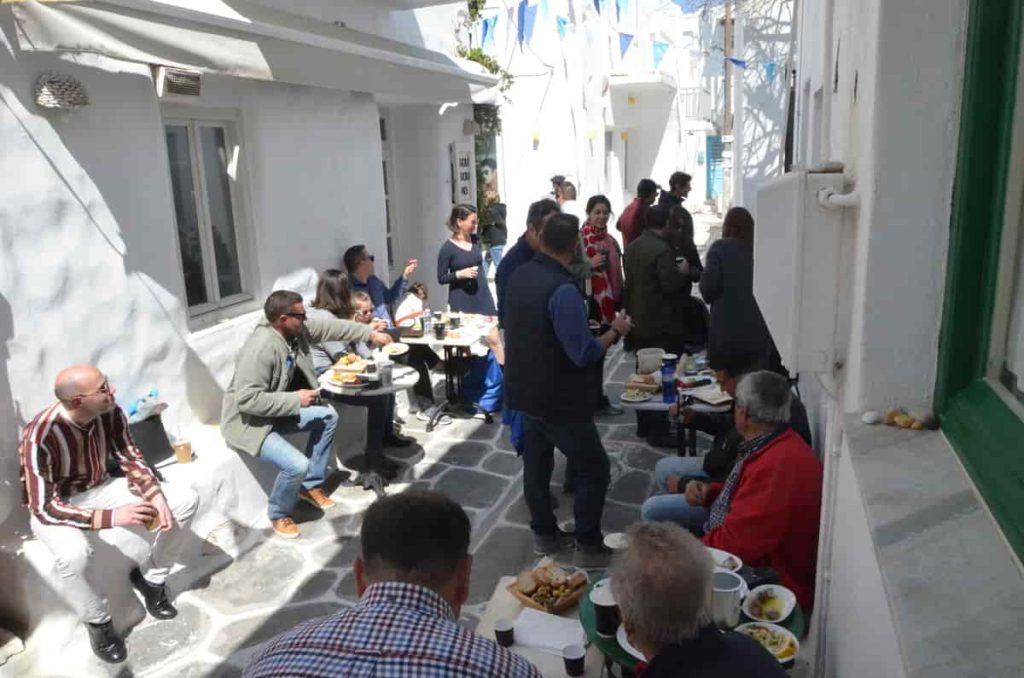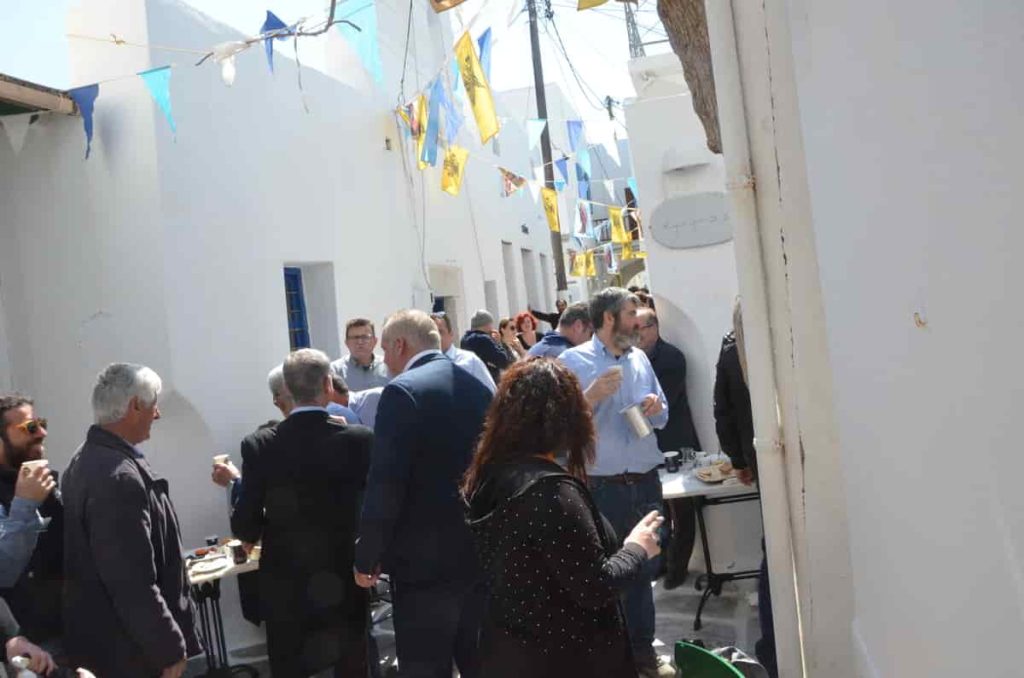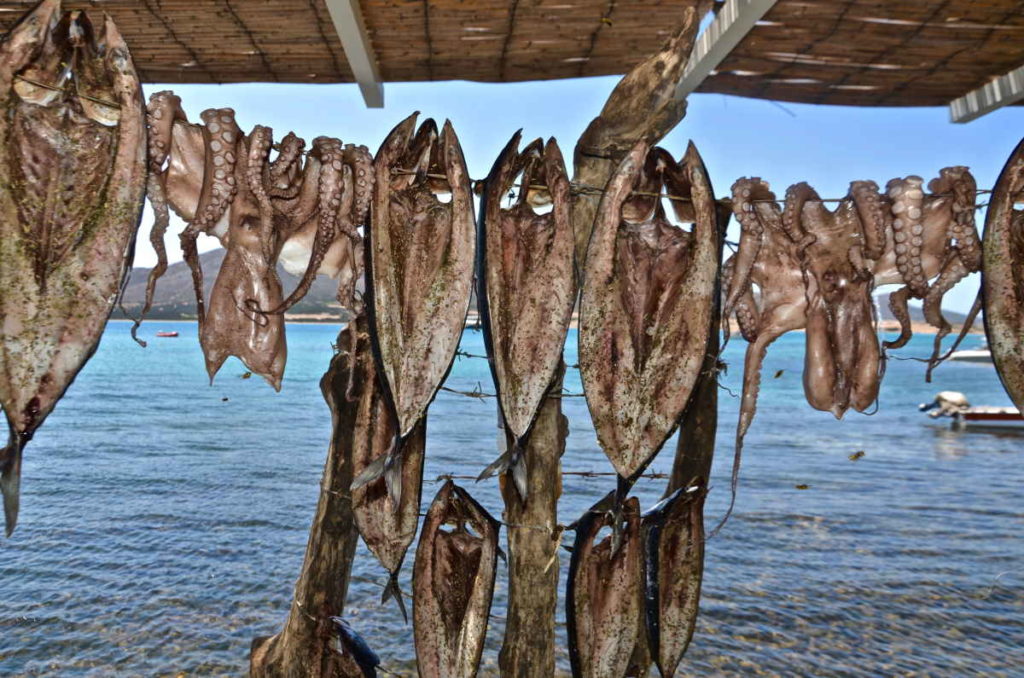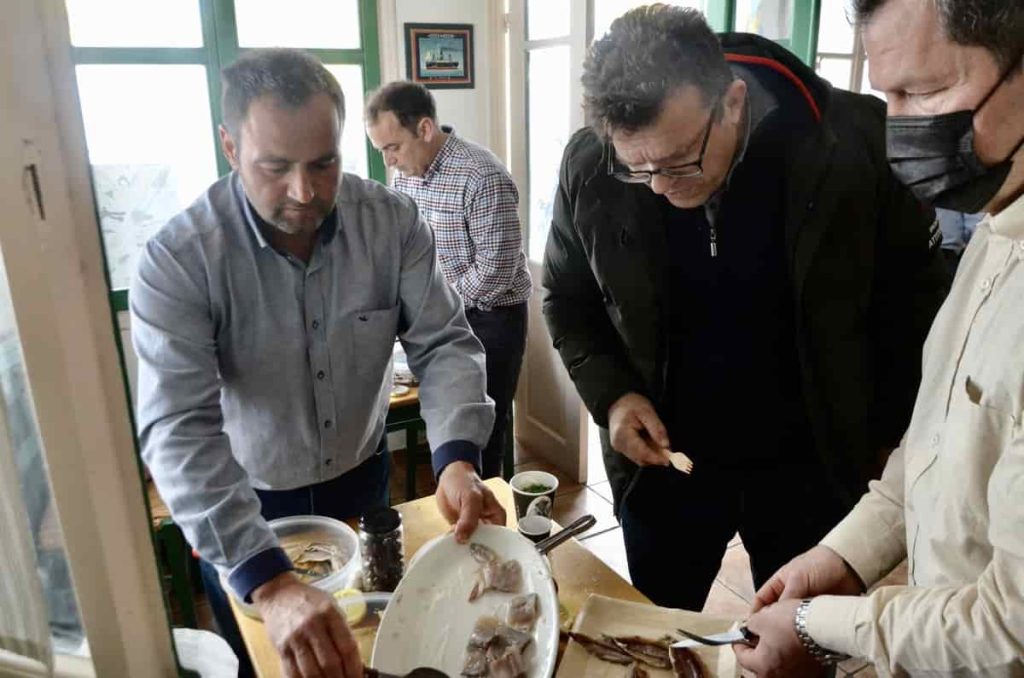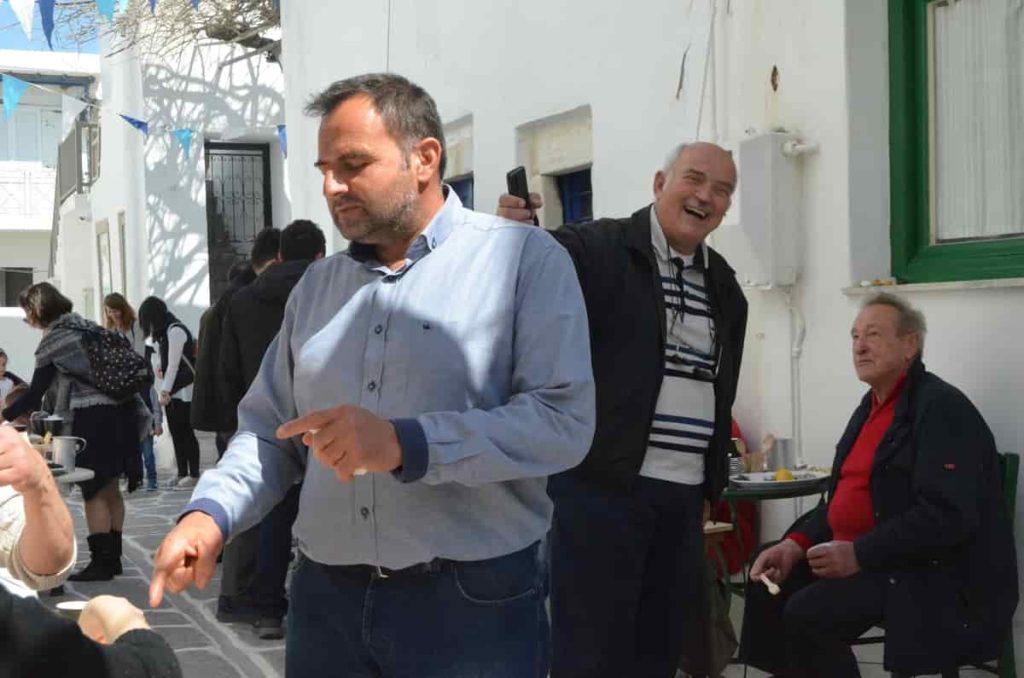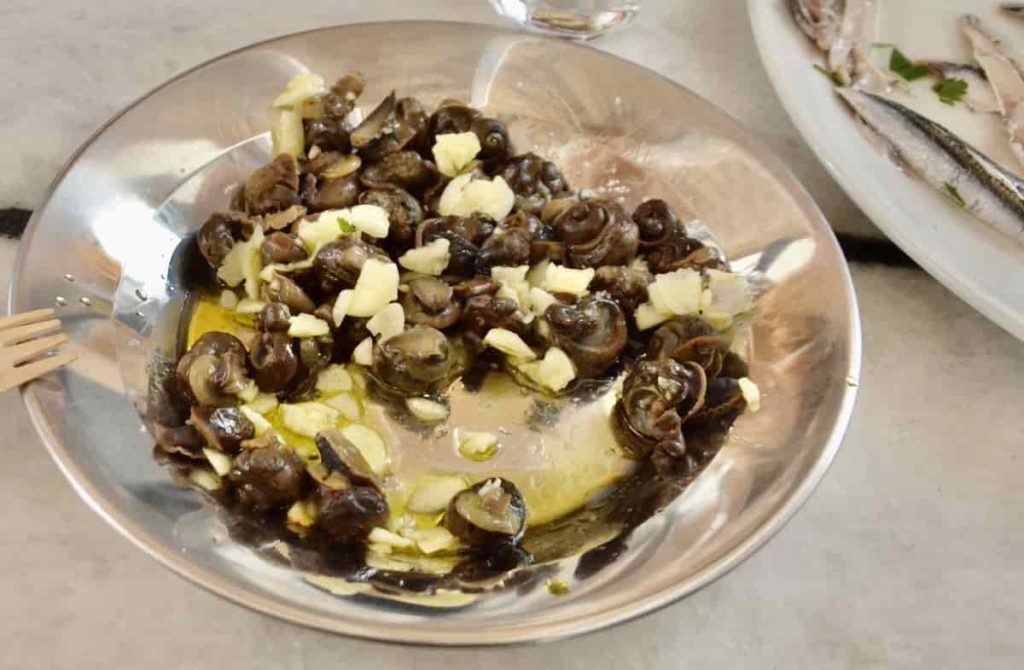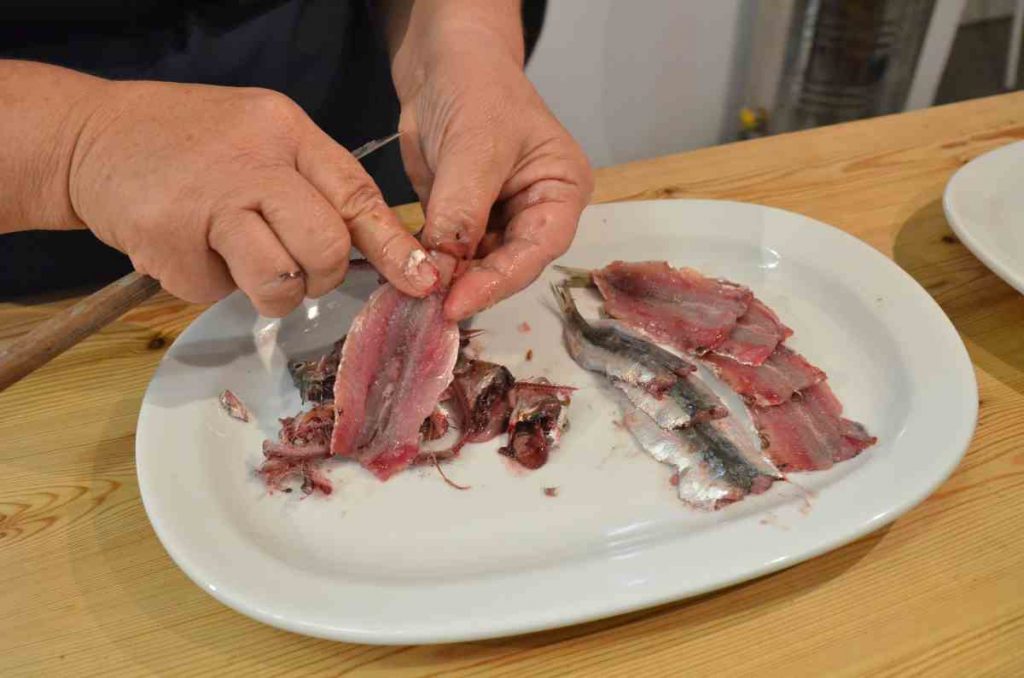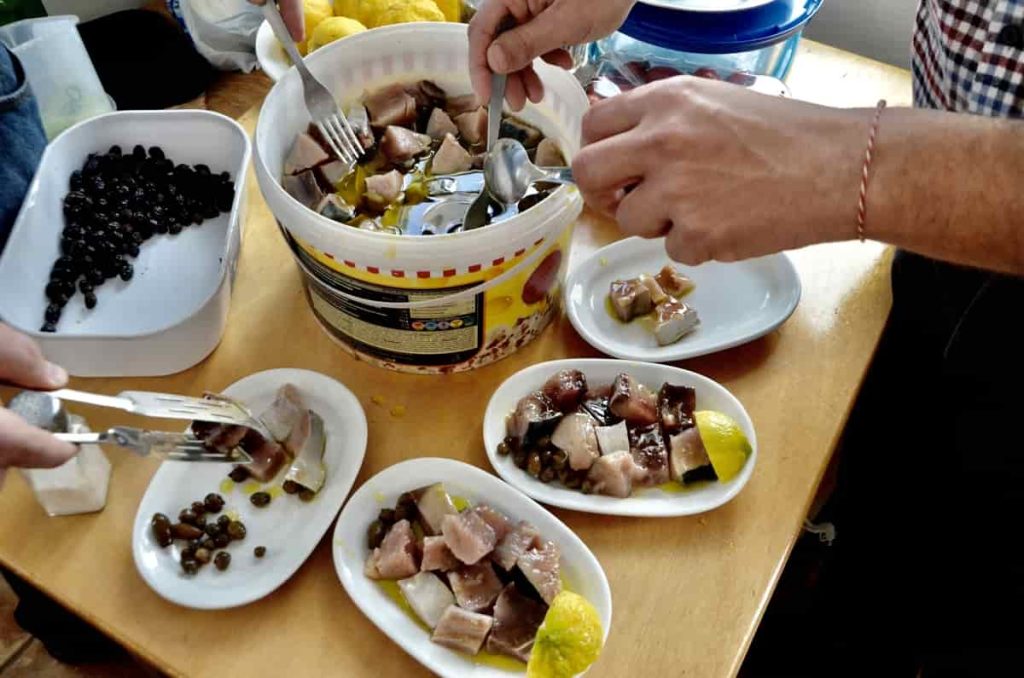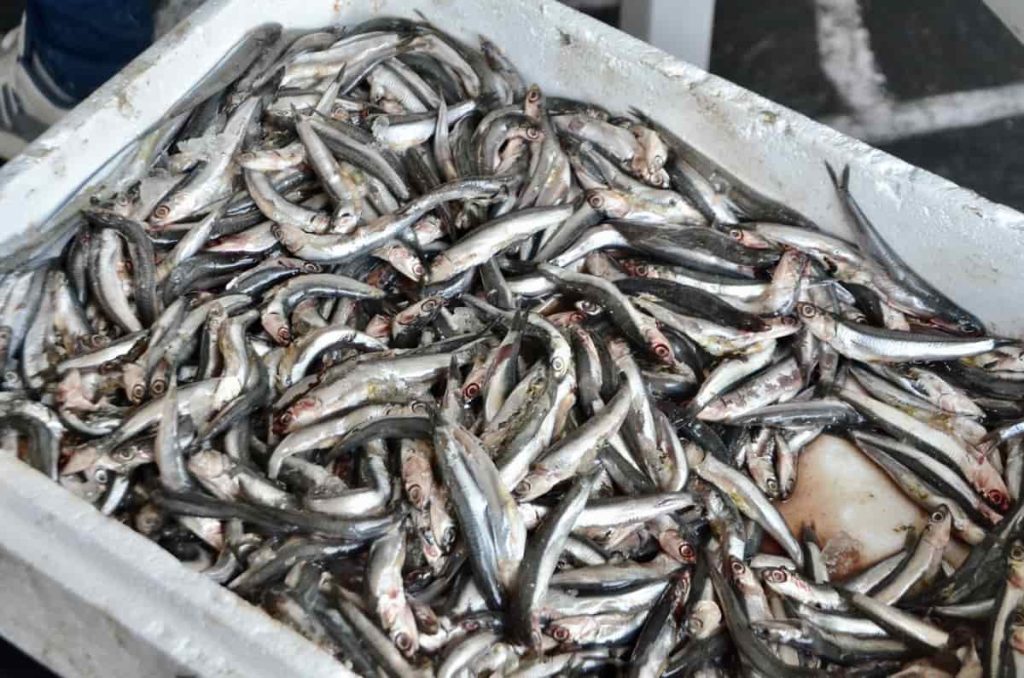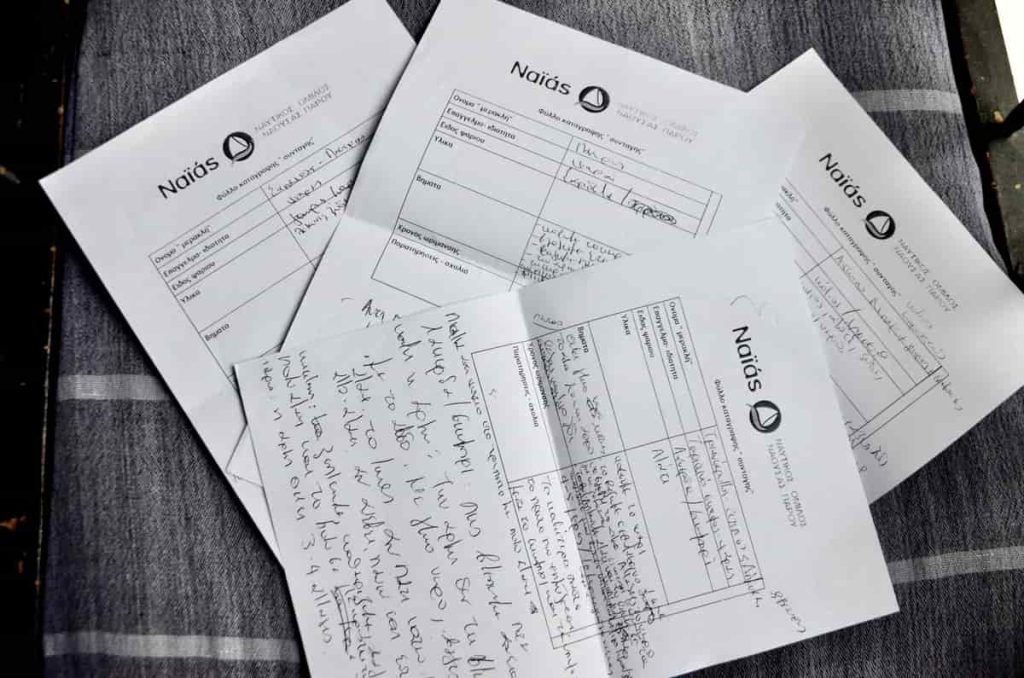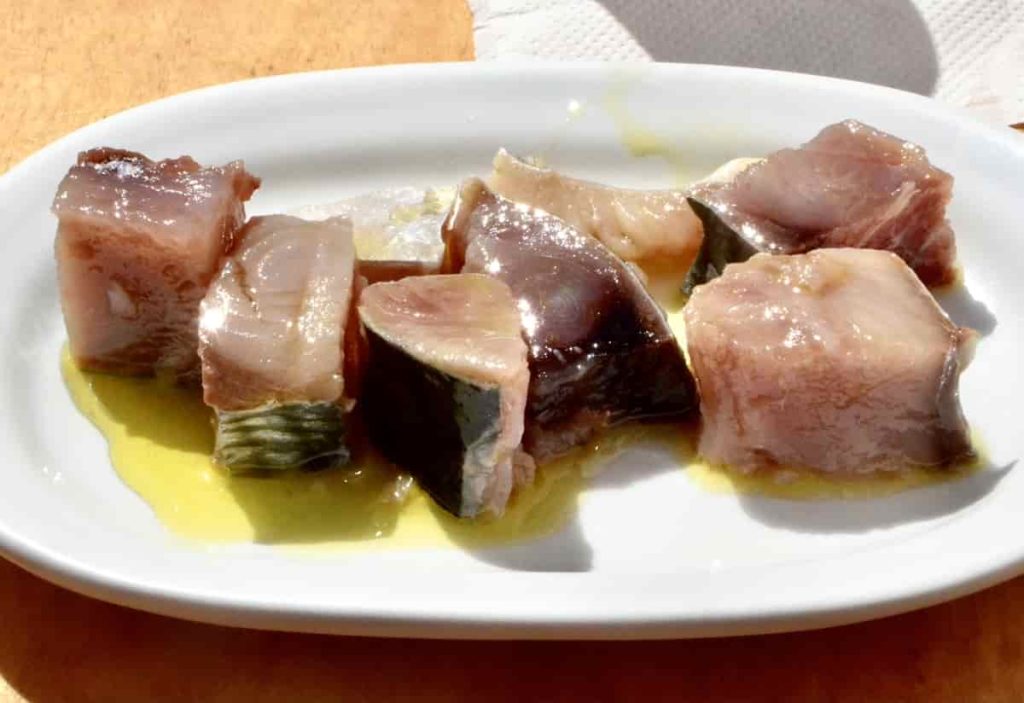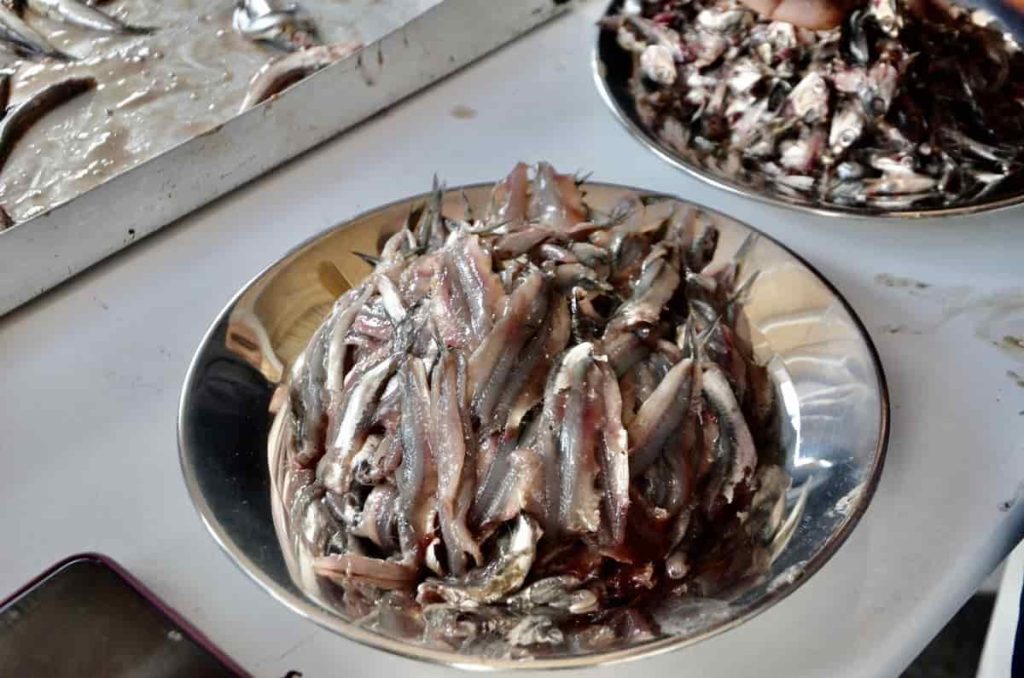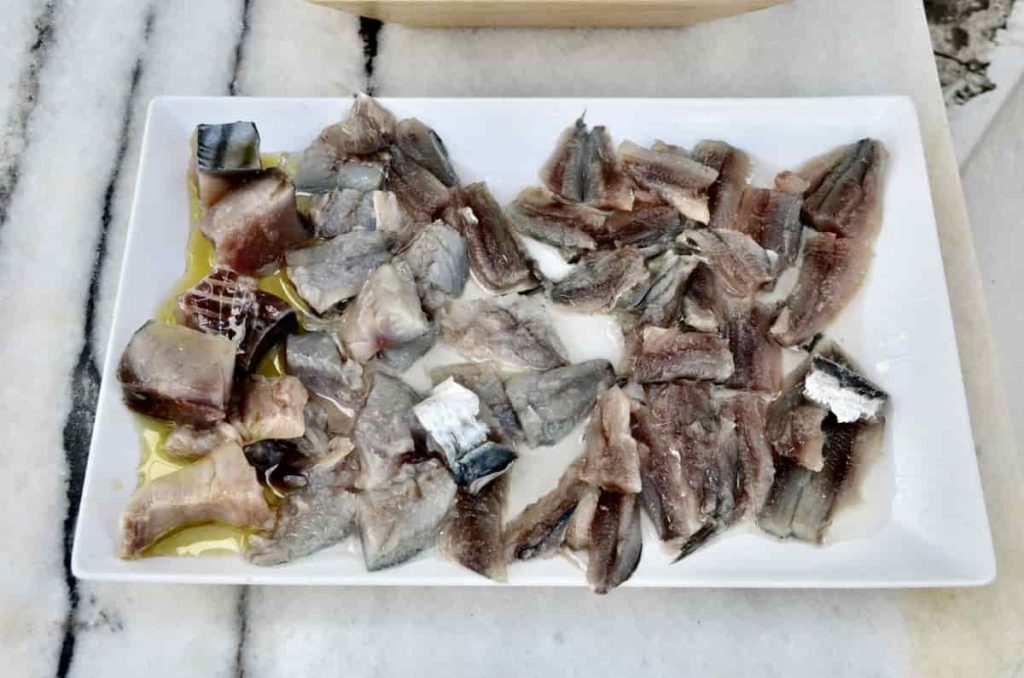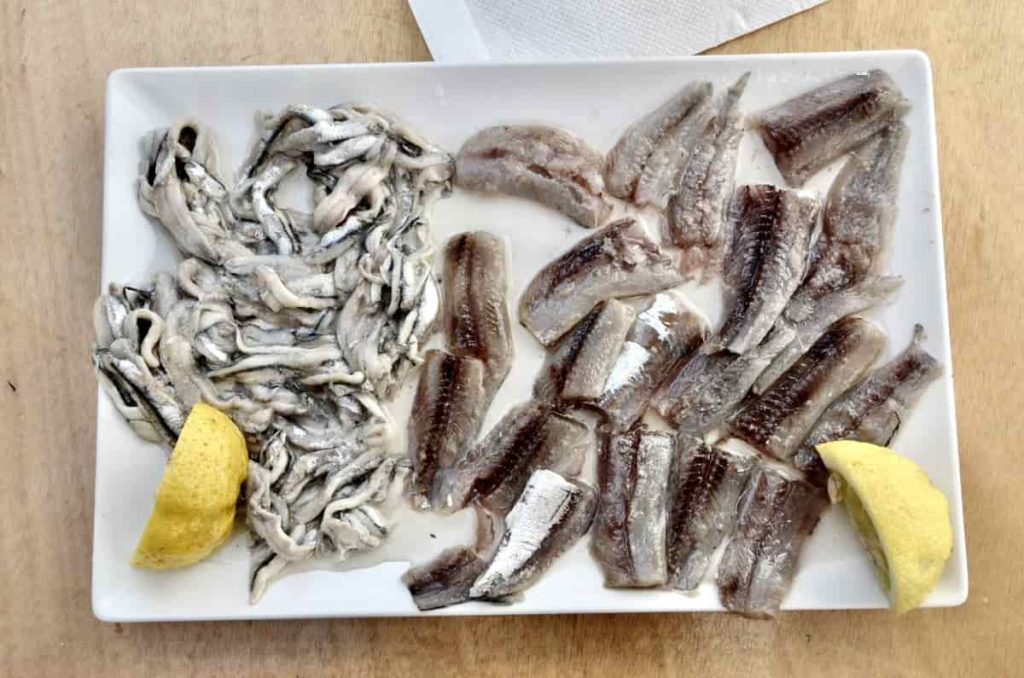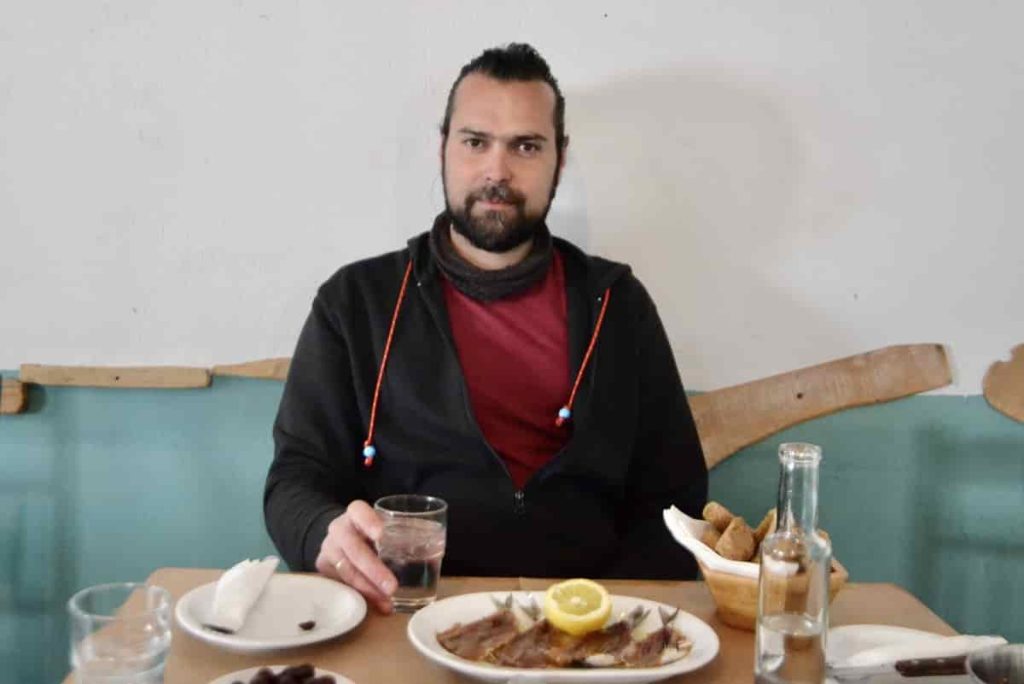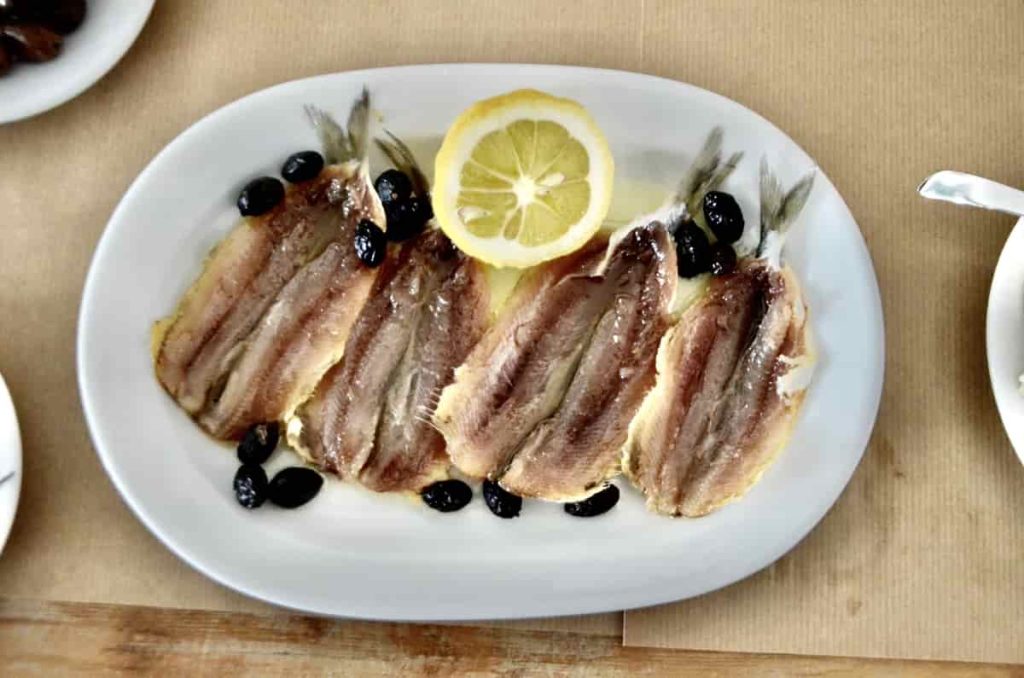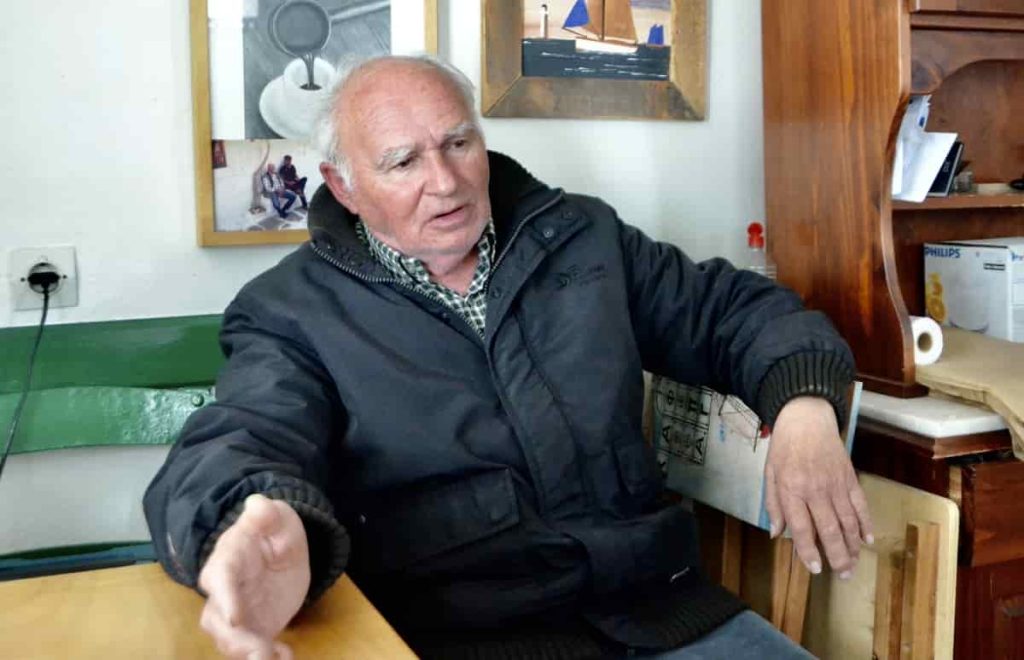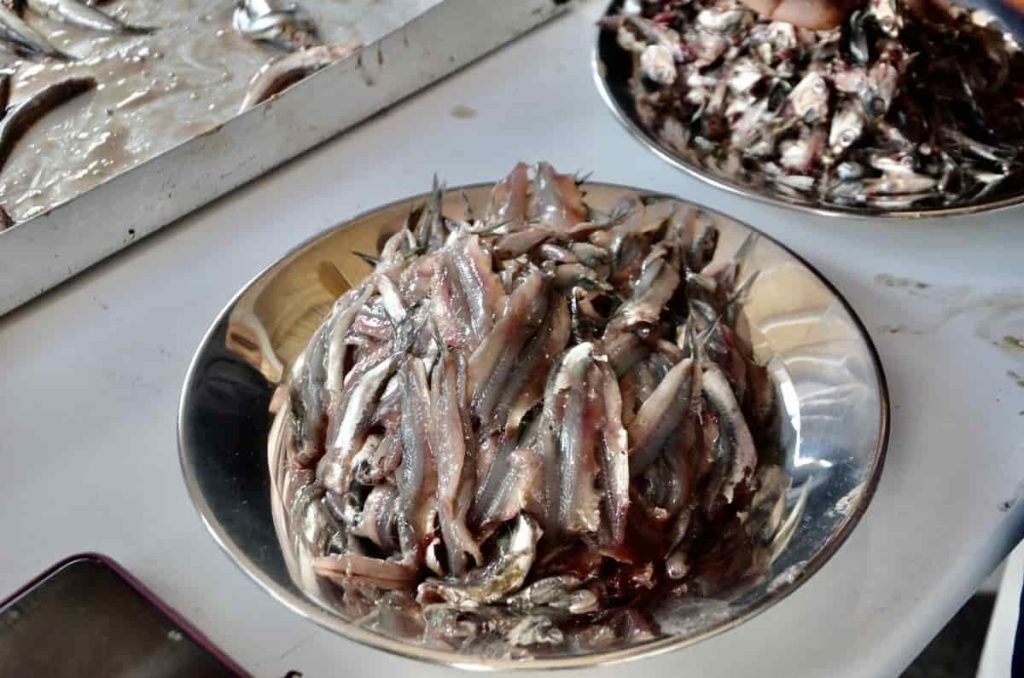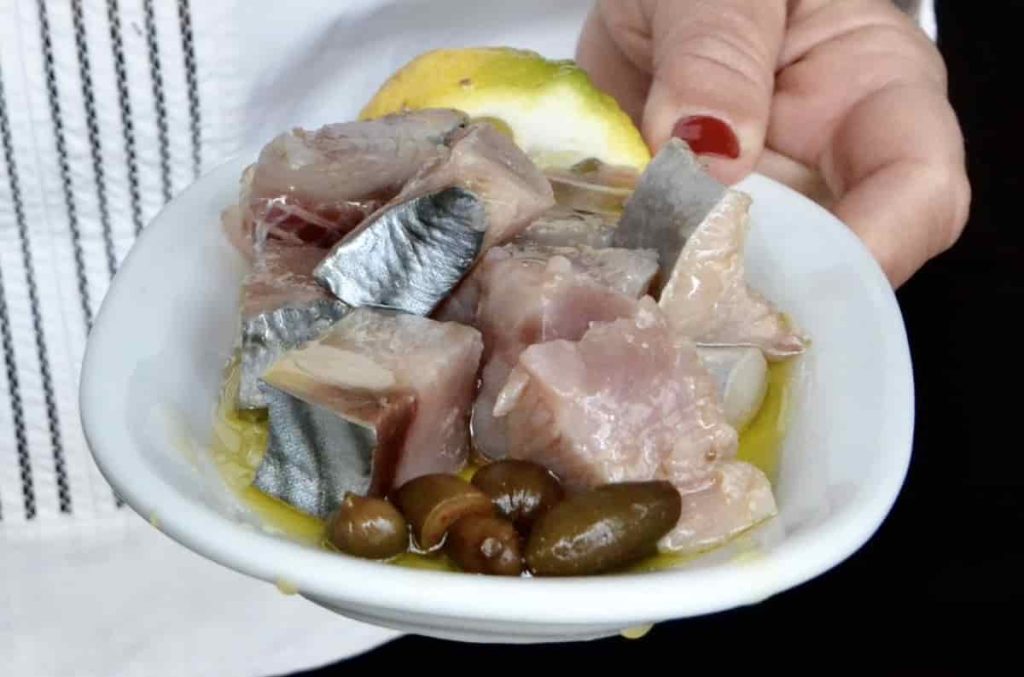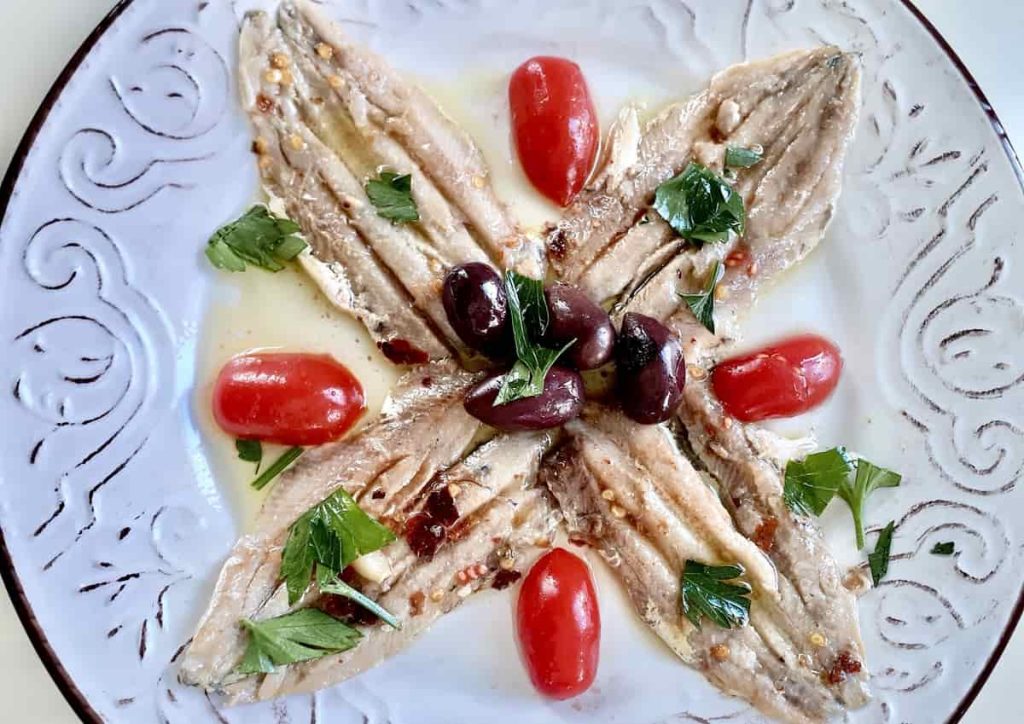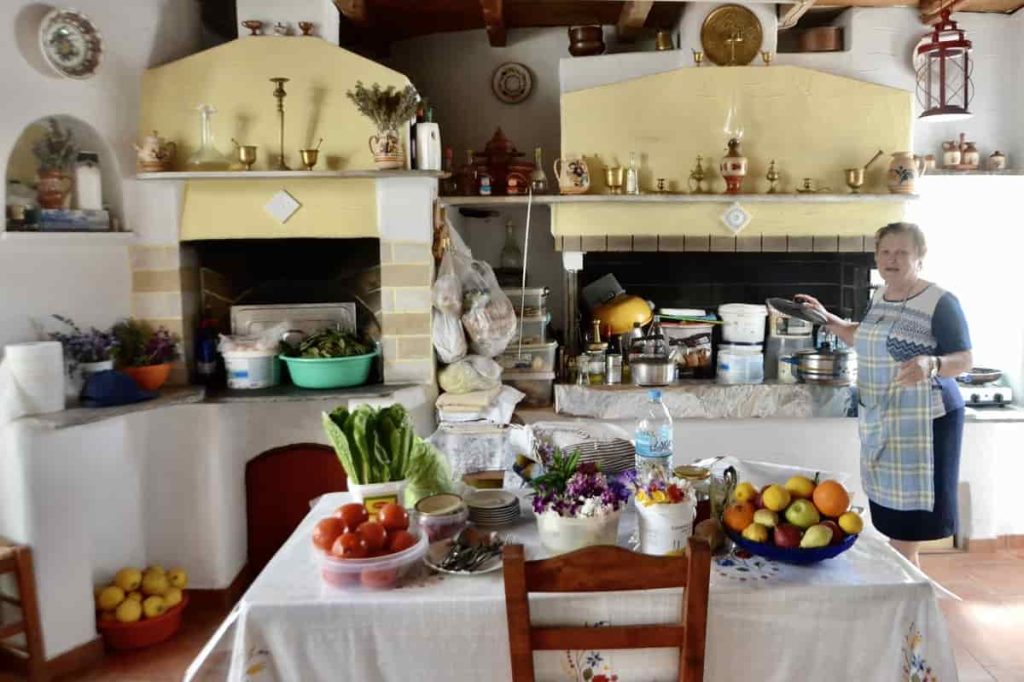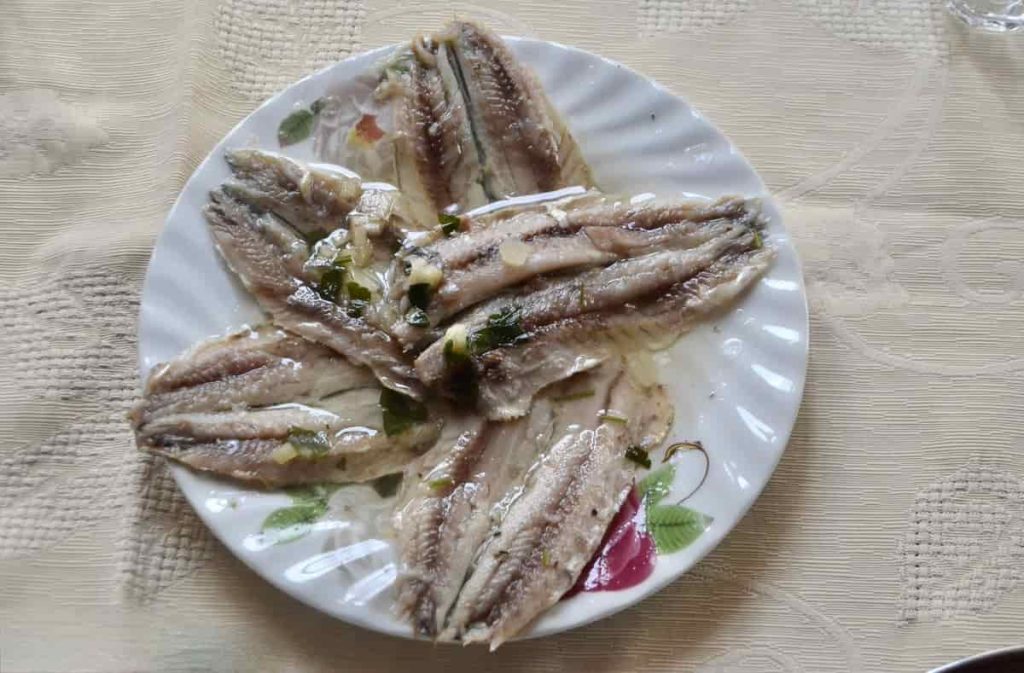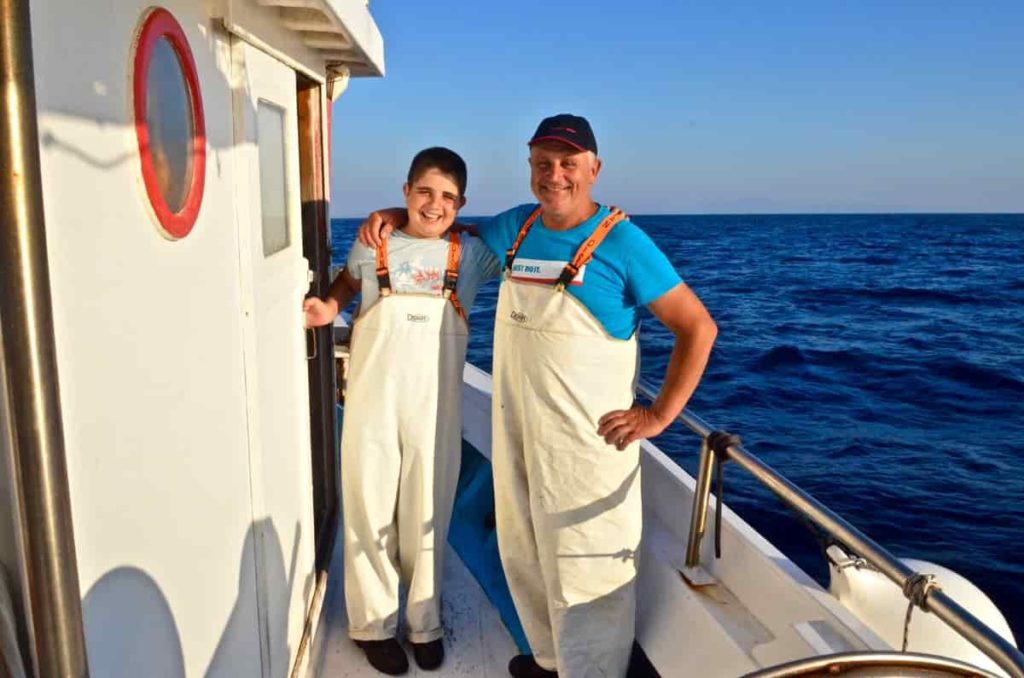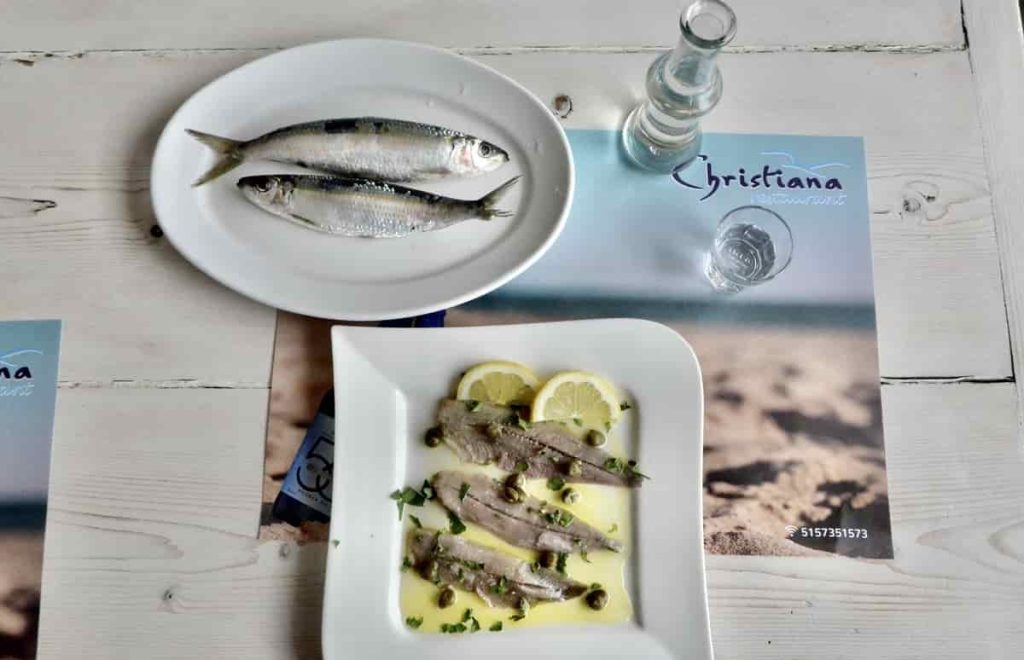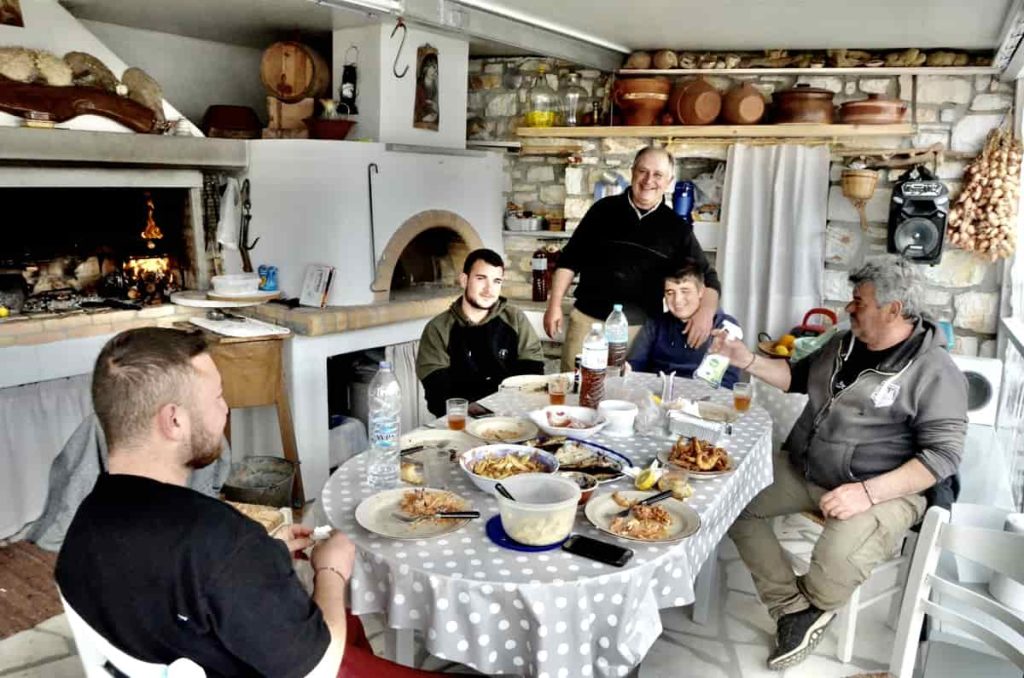It was once upon a time a settlement in Paros which was the largest fishing village in the Cyclades. Inside its picturesque harbor - that looked like a theater stage -, were stacked, dozens of boats and fishing boats, with whose fishing the inhabitants of the village lived. At that time around the port, there were dozens of small warehouses where fishermen placed their nets and tools, while in the summer you saw fishermen, originally patching and fishing.
At that time, households picked up countless cheap fish (lakerda, anchovy, frissa, sardine, mackerel) to preserve them, while others sun-dried them (bortolino, octopus, fur) for the same reason. All these were the best meze for their suma -local raki- either in the houses or in the cafes and their taste was reminiscent of his years culture of poverty, and the time when people appreciated and enjoyed them big small of his life.
Half a century later, the port of Naoussa -why are we talking about this- it is full of dozens of restaurants, life has changed, tourism, new needs, and new living standards, have changed the face of the island and of course the gastronomy. The pasta almost disappeared in the "gourmet" and "alleged" restaurants and you may find them in regional taverns that honor themselves and the island.
This winter o Nautical Club of Naoussa, Paros, Naia decided to take an initiative to revive but also to revitalize these humble flavors that so characterized the life of the "holy daily life of the island". The occasion was a spontaneous meeting of Naia's group in the shipyard of the monastery of Agios Ioannis Detis where the first recipes were tested and further actions were planned:
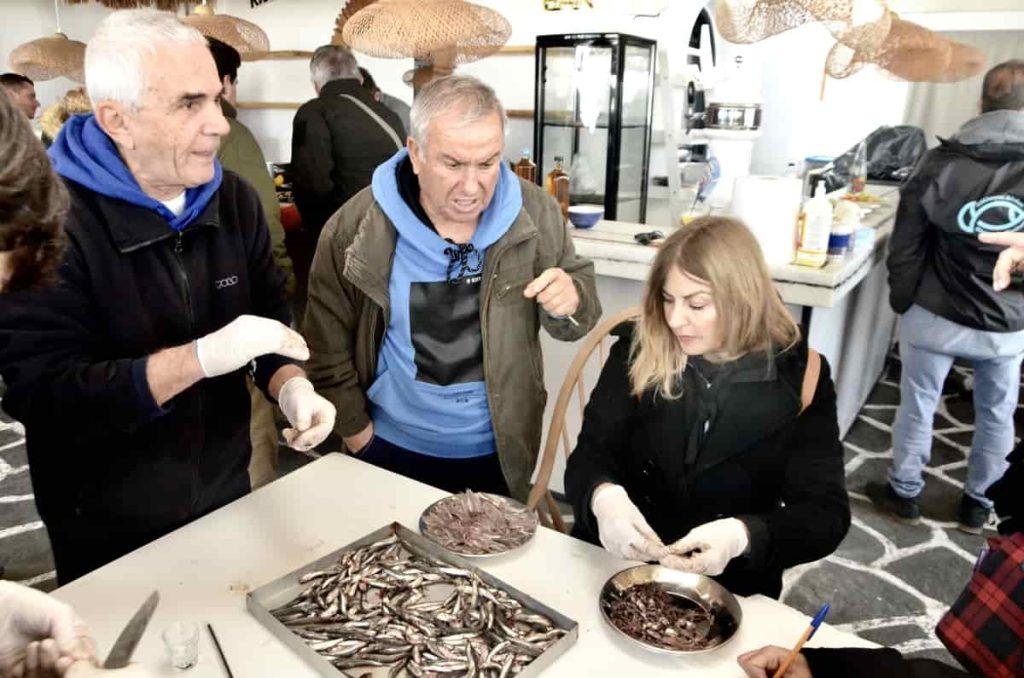
Cleaning fish in an aluminum saucer, under his guidance Nikolas Malamateniou, under the program 1 dish 10 summers of Clean Blue Paros
So on Sunday 20-3-2022, despite the beauforts, at "Barbarossa", protected by tarpaulins, a "workshop" of salted fish was set up, where the George Margaritis offered the fish generously from his workshop, Geofish (the only one that prepares and standardizes salted in Paros), and showed techniques together with the Naoussa captains, to dozens of friends who defied the weather and participated in the "workshop".
The fish were cleaned, ossified and the lacquers were added to the brine, the sardines and abalone were salted, the anchovies were marinated and everything started to be "cooked" for the next meeting. All this took place in an atmosphere of incredible euphoria and summoning.
On Friday, March 25, after the parade, in the so generous and decent cafe of Vangelis Gavalas "The Old Market" the second phase of the workshop was performed which was the enjoyment of the result. The weather this time was good, summery and the people tried the pastries, and some accompaniments - due to the feast of the Annunciation - (fried cod, octopus wine, salad) and remembered nostalgically stories of old times.
This article is dedicated to this wonderful company of Naia, who is the most dynamic there is today in Paros around civil society, a minimum value for everything they create, as they do not follow the mainstream attitudes, but strive for the identity of the island and the dynamics of community life. At the same time, it shows my love for the pastries, these precious delicacies of the Greek cafes.
Very soon a second workshop will be organized with parallel events on the theme of Paros's hot dogs, such as furs (the most characteristic meze of Paros), the sun-dried octopus and Bortolino (small foam fish dried in the sun).
The simple members and the members of the Board of Naia who were the leaders were Anagnostopoulos Sebastianos (agronomist), Volosyrakis Antonis (chemical), Kagani - Anna Kortianou (former deputy mayor of Paros), Kasapidis Tasos (professor), Kouzoumis Ioannis (engineer), Kourtellis Dimitris (sea sports), Louki Flora (mathematical), Maounis Elias, Barbarigos Antonis (University of the Aegean), Mytarea Niki (journalist), Panteleios Nikolaos (banker), Roussos Constantinos (electrician), Eleni from Tripoli and Hatzopoulos Ioannis (Mediterranean studies-gardener).
In general, all of them showed great satisfaction from the response that the event had, from the great and enthusiastic participation in the preparation and tasting of the pastes and they hope that the pastes will return to the diet of the people of Naoussa, but will also be included in dishes to be offered by restaurants thus promoting one delicacy of the gastronomic heritage of Paros.
This workshop of "the pastes of Paros" is a link in the chain of actions of the Nautical Club of Naoussa Paros - Naia that aim at promoting the cultural heritage, but also the preservation of the environment of the island. Let us not forget the last two actions of Naia: a) that of limiting the overfishing of Kalymnos fishermen in the bay of Naoussa and b) not using disposable utensils in festivals and celebrations.
But before referring to the recipes of pastes prepared in the laboratories of Naoussa, and before referring to the taverns that offer pastes and their owners, let us make an introduction to the topic of timeless and supra-local maintenance technique of pastes.
The timeless technique of pastes
All over the world, people who live near the sea or in lakes eat fish raw and process it in various ways. Our, the Greek way, is the preparation of lakerda and salted or marinated small fish, such as sardines and anchovies. In both cases the fish is "baked" with salt.Salt since ancient times has held a very important place in the lives of peoples and man could not live without it. According to the ancient Greeks, it symbolized friendship, grace, delicacy, with which they sealed the agreements and offered it to the sacrifices to the gods. The phrase "Attic salt" declared the subtle and intelligent Attic spirit.
Salt has aseptic properties and does not allow the growth of microorganisms. For this reason, since ancient times, food has been preserved with salt. They used it like we do today in the fridge, and foods that were preserved with salt were like today's frozen. The ancient Greek word for salt is "o als" (general: of salt) and we should not confuse it with the word "i als" (general: of salt) which is the sea. Mainly salt was used to preserve fish. The ancient Athenians especially valued the salted fish, which they called "Tarichi" and imported from the Black Sea, Sicily, and even Spain. But their rarest delicacy was none other than him garo, an exquisite sauce praised by Sophocles, Plato and Pliny, from fish offal and small fish (sardines, atherines) that were salted in coarse salt and spread in the sun for 2-3 months. The thick liquid they got from the strain was diluted with olive oil, wine or vinegar and was their favorite sauce.
Pickling is one of the oldest methods of food preservation. One would say that it is an art, a science. The process of fish pickling is influenced by the weather conditions, the size and species of the fish, and the season in which they are fished to have the most appropriate thickness and fat.
The preparation of the fish and the technique of pickling
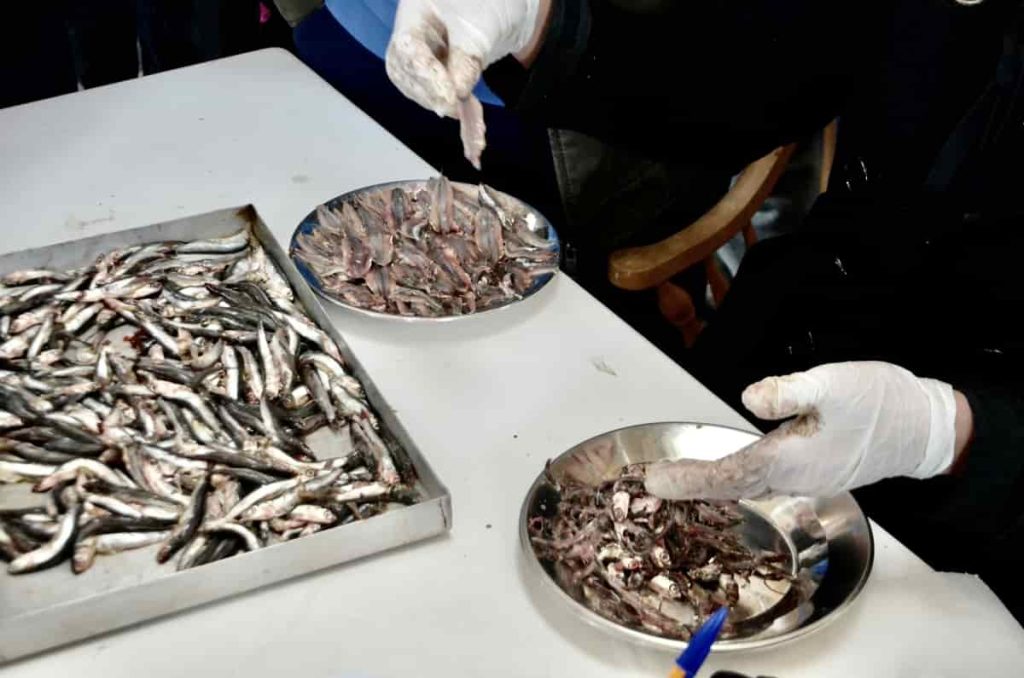
Beheading and filleting anchovies in aluminum saucers as part of the program 1 dish 10 summers Clean Blue Paros
The preparation of the fish in general regardless of the type and size of the fish is as follows 1) The beheading and removal of the entrails as soon as possible from the fishing 2) Washing and removal of the blood 3) Chopping the fish and when it comes to filleting , removal of the backbone 4) Pickling with layers of salt and preserving the fish in salt depending on the size of the pieces of fish 5) Salting the pastes in fresh water 6) Putting the fish in olive oil, lemon, vinegar and alternatively with various spices, garlic.
The pasta workshop of Naoussa
The salted fish workshop of Naoussa was processed lacquer, sardine, anchovy and mackerel.
Salted lacquer
Lacreda is the king of Greek salted meats and to make it, thick and fatty fish are used such as bonito, tuna, toriki, all fine fish rich in omega-3 fats, the best fats for our diet. The fisherman Dimitris Triantaphyllos, of the boat Zeppos described the preparation of the lakerda: “We cut the fish into thick slices and remove the entrails (we do not use the head). We wash them very well and leave them in sea water for 2-3 hours to get rid of all their blood. We change the water in space so that it finally comes out clean. Spread salt in a bowl to cover the bottom and place the pieces of fish so that the cut side rests on the salt. Put in the fridge for 4-5 days. In between we check and empty the liquid that the fish may have left and we make sure that our slices rest on salt. When the above time has passed, take out the slices of fish, remove the skin and rinse them very well. Make a light brine and put the pieces of our fish in it for another 10 days. When they are gone, they are ready to be stored in olive oil with peppercorns, bay leaves or other aromas of our choice. ”
Salted anchovies - vinegar
Anchovy is the smallest and most sensitive fish, so it does not need special pickling, especially now that we have refrigerators. We clean it, removing the head and bones, we fillet it and leave it in the salt (the time is proportional to the carpenter, from 1 hour to 12 hours). Then rinse it and throw it in vinegar for 3 hours depending on season and thickness. Then spread it with garlic, parsley, lemon peels and sunflower oil in a taper and put it in the fridge. Put the relevant olive oil in the serving.
Salted mackerel
The processing of mackerel begins with the removal of the head, the central bone and the filleting. The fillets stay for three days in the salt and lemon and then you pull their skin with the scales and put them in the vinegar water. It is very important to add a lot of salt, the lemon also takes care of the cooking of the fish. After draining, they are placed in a taper that goes into the refrigerator with herbs, garlic and seed oil.
Salted sardines
Nutritious and delicious, sardines have been the fish of poverty since the time of ancient Greece, whose every increase in price caused social unrest. To this day, it remains the most popular and favorite salt pan in our country. The preparation of the fish was shown by Nikolas Malamatenios of the family of the well-known and great fishermen of Panerida. "First we clean the sardines from the entrails and discard the fish heads. Wash the sardines well and drain them just as well. We put them in coarse salt and leave them for 3-4 days and then strain them from the juice they make. ”
Anchovy and sardine
The taverns of Paros that prepare alipasta
To our great joy and our delicious enjoyment, there are some taverns in Paros that honor the island and produce their own saltines, following a long local gastronomic tradition. We present them to you and we are available to enrich our article with those that have escaped us.
The salted sardines from Takimi, the cafe-tavern of Naoussa
Ο Barbarigos Antonis was born in Naoussa in 1982, studied Marine Fisheries at the University of the Aegean and since 2011 he maintains with his wife the Takimi, the most alternative and with excellent delicacies - and often beautiful music - hangout of Naoussa. His menu of salted meats includes smoked mackerel, marinated anchovies, salted sardines, and marinated anchovies enhance the taste of his salad with lentils, while from the deli hot he serves the fur.
The marinated anchovy of the Old Agora cafe in Naoussa
The Old Market cafe, in the alleys of Naoussa, saves the value of the gastronomic tradition of the settlement. It was first opened in 1963 by Christos Gavalas and his son Vangelis received it in 2005 - until then he was fishing.
«In my father's day, you could feed a family with coffee and ouza. Today it is no longer possible because the costs are high and the clientele of coffee and ouzo retirees is declining. That's why we put a pan and we work it at night like a tavern».
If in the tourist Naoussa of the summer Mr. Vangelis is an oasis - for this reason in the evening you will find it difficult to find a place to eat maridaki, squid but also his famous meatballs and meatballs - for the winter the cafe of Gavalas is just the heart of the social life of the village.
Mr. Vangelis serves in the cafe only salted anchovies, which he does not pickle at all as usual, but makes it in his own way:
"Anchovy is a very sensitive fish, it does not stay… it spoils immediately. You take out your head, wash it, throw it in the vinegar for 3 hours depending on the season and thickness. Then you open and pull the bone. Add garlic, parsley and salt and immediately refrigerate, and then put the relevant oil in the serving".
Mr. Vangelis, as the oldest of the company, tells us about the old pickles and the masters of pickling:
"The forgiven George Chamilothoris, the owner of the famous Barbarossa, along with grilled salad, fur and octopus, made the best lacquer, in wine barrels, vertically, he cut it into blocks, put it in brine, and on the eve, he cut it into small morels, and then in portions. The brine is a great art, we controlled the salinity of the brine with the egg method. The more salt the brine had, the higher the egg floated. The men made the salts, rinsed and cleaned the fish in the sea. "
The anchovies of Maria Ragousi at the Artistic Cafe - Prodromos
The Artistic cafe in Prodromos, since 2011 when the address was changed and Antonis and Maria took over, it became the landmark of the village -and one of the most cult hangouts of Paros- thanks to its unique appetizers and its special festivities. Maria Ragousi serves perhaps the most interesting dish of salted anchovies on the island. Her recipe:
The famous salted anchovy of Maria Ragousi: "Wash the anchovies, clean them, fillet them and place them on a grill in layers with coarse salt between them (to strain the liquids caused by the salt). After being left for 24 hours and cooked, the fillets are washed to remove the salt, and put in vinegar for half a day. They are washed again and then placed in olive oil and seed oil, with garlic, allspice, bay leaf and peppercorn (Turkish) seeds located in the bright window of the store. They are served with tomatoes and elixirs ".
Aesthetically and tastefully a poem.
Stamatis's pastries in the tavern of Katsouna in Santa Maria
Just behind the beach of little Santa Maria, the Maria Katsouna, since 1993 she has turned the yard of her old farm house into a tavern for almost 30 years. And with two conversations we talk about the courtyard of miracles, because two hundred meters from the small beach -one of the most cosmopolitan beaches of the island- you meet without further ado Greece of 1960. Mrs. Maria told us:
"Our families came from Bodrum (Bodrum) in 1922, refugees in Paros by boat. From there they had learned the salts. My husband Stamatis, since he had the boat, fished, among other things, light fish and we made them salty. But in general we used to pickle the big fish, like the cod, to cook them when needed. At the family table when we had fava beans, lentils, beans, chickpeas we always had the savory salt next to it. Of course the most delicious was the lacquer made of bonito".
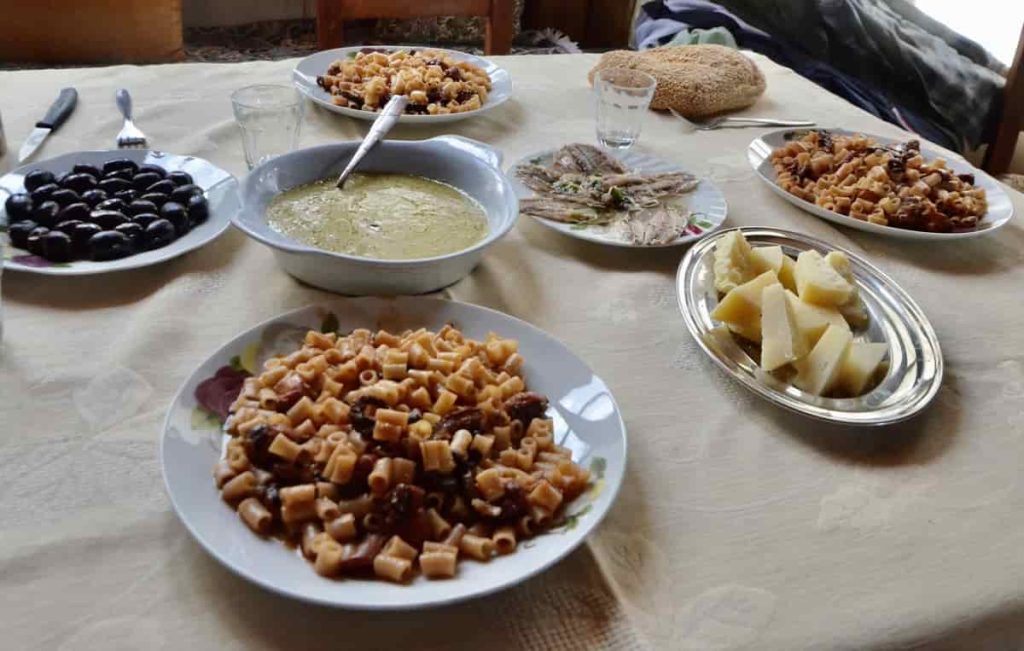
The Katsouna family's lunch table. Macaroni cut with octopus and fava with salted sardines.
"We used to preserve the salts in olive oil. Now with the refrigerators we place them in the fridge, but we also put seed oil because olive oil in the fridge is sticky. The pastes were usually made by men, after they were cleaned in the sea, filleted and pickled. Besides, it was a meze for men, but also to offer it to friends and guests. Each place has its salt, Anafi the pike, Heraklion the trumpets. The meze of our tavern, the Captain Stamatis's salt, is offered as an appetizer and is never charged."
The salty fries of Christiana tavern in Ambelas
In the tavern Christiana on the shore of Ambelas, you admire the lights of Naxos and the moon especially when a giomato rises above it, you enjoy the impeccable treatment and you know that you will eat the best fish soup and the freshest stone mullet of the island, since every day they take care of it The Vassilis Tripolitsiotis and his son Christos, the youngest captain of the Cyclades. Vassilis told us about the recipe for fries that has been the typical suma meze in his parents' tavern for years (Christos and Anna) and his brother Michael.
"Fries or sardines are like herring and are foam fish that are usually fished with purse seines. We fish them with the nets together with the other fish. The treatment of the frieze begins with the removal of the head, the central bone and the filleting. The fillets stay for three days in the salt and lemon and then you pull their skin with the scales and put them in the vinegar water. It is very important to add a lot of salt, the lemon also takes care of the cooking of the fish. After draining, they are placed in a taper that goes into the refrigerator with herbs, garlic and seed oil. They are served with olive oil, parsley, lemon and capers. ”
Epilogue
Although fish picking nowadays - due to the new ways of preservation that exist in preservation and freezing - is no longer a necessity, the salts in each case are considered very fine food, necessary for the accompaniment of legumes in family meals but mainly the highest timeless meze for fanatics, unique accompaniments of ouzo, tsipouro and especially in Paros, the best company of suma.
For this reason the action of the Nautical Club of Naoussa Paros "Naia" to take an initiative for revival but also re-signaling of these humble flavors, which so characterized the life of the "holy daily life of the island", struck at the heart of the problem for the formation of cultural and gastronomic identity of the island, through the acquaintance with traditional techniques that bind the inhabitants with their place.

